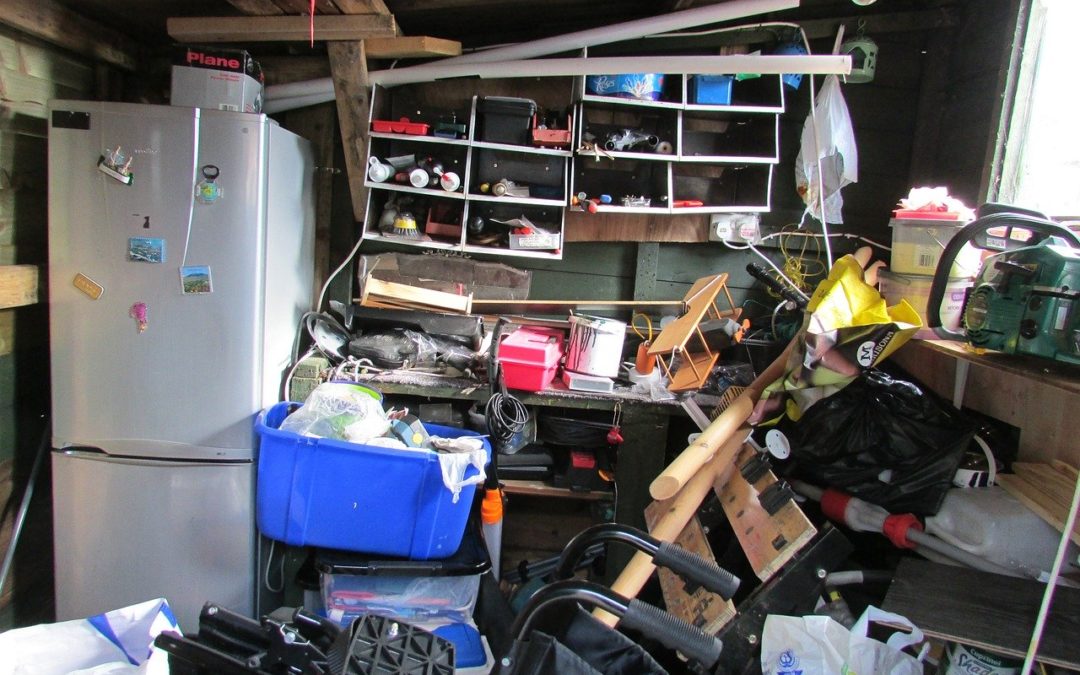Hoarding disorder is a term few people truly understand. Unless you or someone you know has struggled with this condition, chances are you don’t know much about it. The APA defines hoarding disorder as a chronic problem in parting with one’s possessions. Of course, that’s a simplified description. To those struggling with hoarding, it’s a waking nightmare capable of swallowing up everything they hold dear.
Recent studies suggest that between two and six percent of Americans may live with this diagnosis. That’s (potentially) over nineteen million people. In our experience, most folks are pretty shocked by that figure. Now, to be fair, most of us have some level of disorganization tucked into a closet. And we all have projects piling up on our to-do lists. However, hoarding is more severe than merely falling behind in chores. At extremes, it can take over entire rooms or houses, even making them unsafe to inhabit.
Some individuals keep things they hope to use or sell. Others collect animals, or even struggle to throw away trash. Over time, it becomes increasingly difficult to make repairs or clean. As a result, hoarding houses often deteriorate into unsanitary conditions.
The Unseen Costs of Hoarding
Our homes have an important role. For many, they offer a sense of safety, comfort, and stability. When that stability is compromised, we feel it everywhere. Consequently, when our homes aren’t well, we aren’t well. And, when we struggle with a problem, the signs tend to pile up around us. This is, obviously, true of hoarding houses as well.
As the clutter builds it creates stress in different parts of a person’s life. For instance, hoarding can complicate relationships. It can also make mental and physical health problems harder to manage. There are even examples of how certain smells have made it impossible for individuals to keep their jobs. In more extreme examples, children and animals are sometimes put at undue risk and must be removed.
Researches have shown that stress can intensify hoarding behaviors. Ergo, as stress goes up, the unhealthy patterns increase. Similarly, as hoarding intensifies, it creates more problems. The cycle goes on, and the situation gets worse.
At this point, we’d like to remind you that hoarding often stems from trauma, pain, and suffering. Nobody wakes up in the morning and chooses to engage in compulsive hoarding. No, this problem is much like any other mental illness. That is to say that those struggling with hoarding disorder need resources and mental support, not scorn or judgment. Many do not know where to turn, or even where to start.
Who Can Help With Hoarding Disorder?
The stigma of hoarding is an enormous burden on its own. In fact, many feel too embarrassed to tell their friends or loved ones about their problem. They remain trapped in silence, walled up inside the cages of clutter and refuse. Thankfully, mental health professionals have the training to help. If you or someone you love is suffering from hoarding disorder, we urge you to seek a licensed therapist in your area.
Of course, finding help with the cleanup process is another matter. Depending on your circumstances, you may need to include animal rescues, friends and family, or community volunteers. Furthermore, cleaning a hoarding house may involve the removal of debris, waste management, decontamination, handling of hazardous material, and more.
Many people find this sort of job too large to do alone. Luckily, this is where AEI Decon can help you sort out the mess. We understand the sensitive nature of this issue and can help you rescue your home. If you’re in Utah, give us a call at 801-888-6698.

